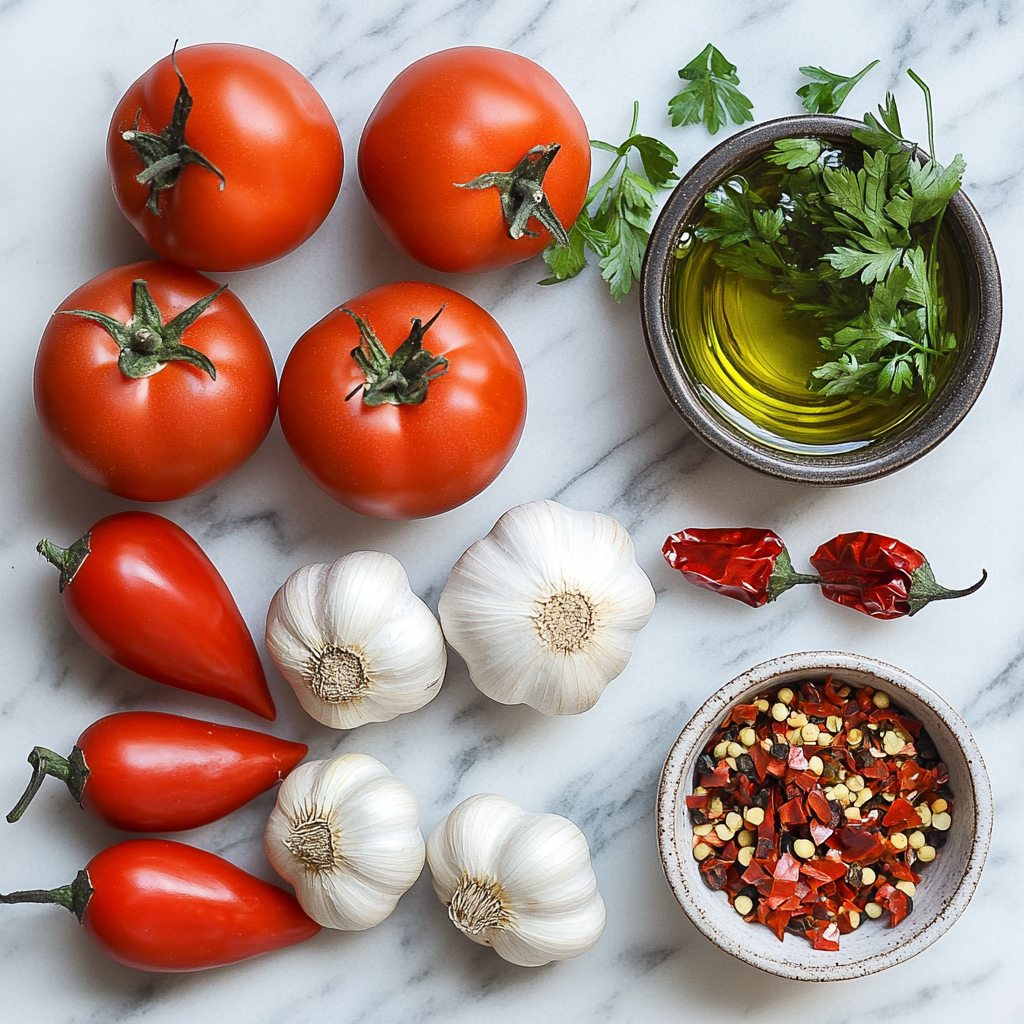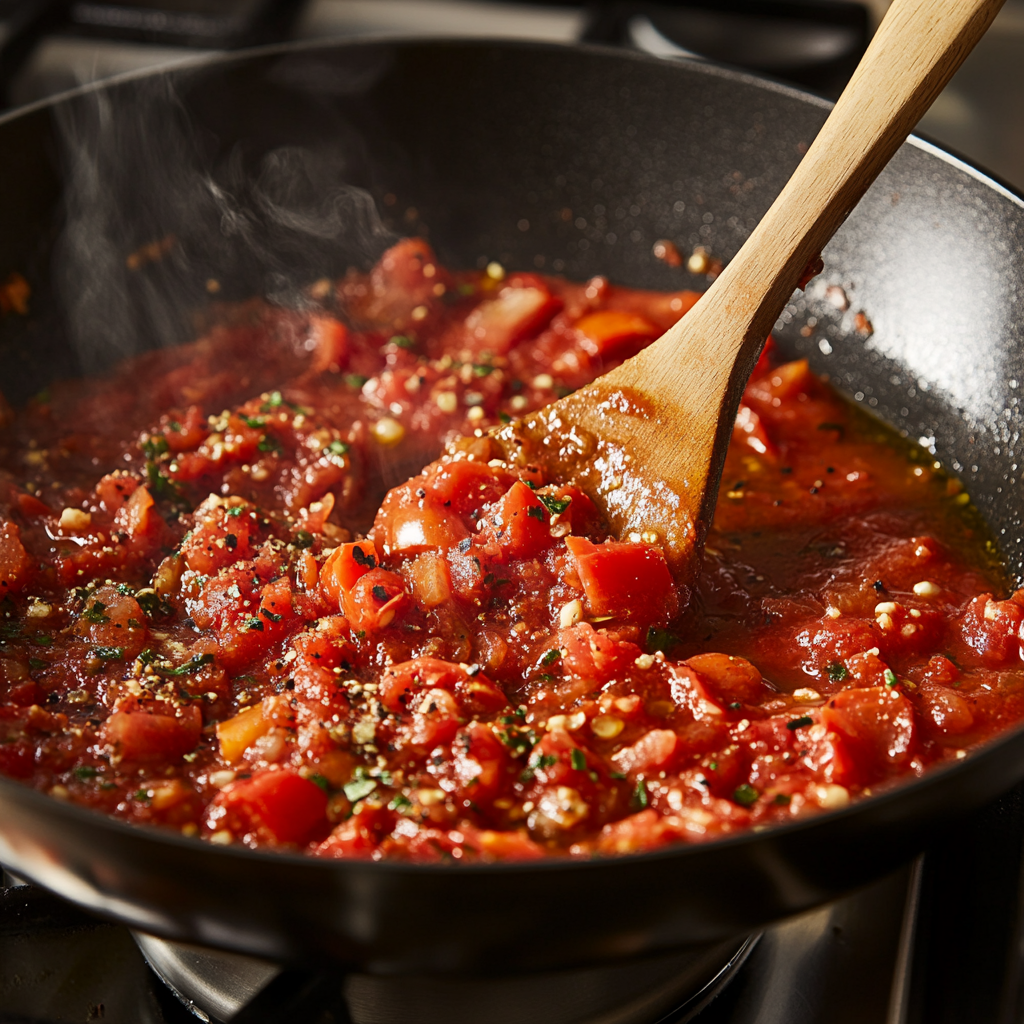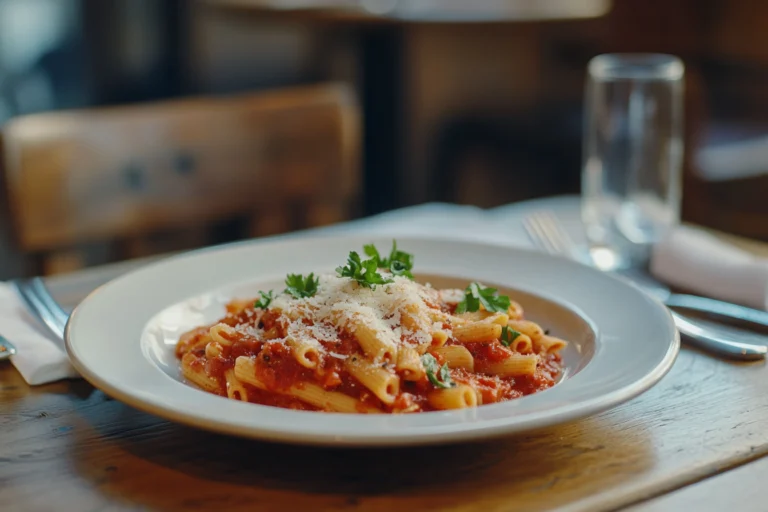Is Arrabiata Pasta Very Spicy? A Comprehensive Guide to Its Flavor and Heat
Arrabiata pasta is celebrated for its fiery kick and bold flavors, but many wonder, “Is Arrabiata pasta very spicy?” This Italian classic gets its signature heat from red chili peppers, but its spiciness can be easily adjusted to suit all palates. In this guide, we’ll explore its origins, ingredients, spice levels, and culinary versatility, helping you master this iconic dish whether you’re a spice lover or prefer milder flavors.
Table of contents
- Is Arrabiata Pasta Very Spicy? A Comprehensive Guide to Its Flavor and Heat
- Understanding Arrabiata Pasta
- Composition of Arrabiata Sauce
- The Heat Factor
- Comparing Arrabiata to Other Sauces
- Culinary Uses of Arrabiata Sauce
- Preparing Arrabiata Sauce at Home
- Health Considerations
- Cultural Significance
- Frequently Asked Questions
- Summarizing the Spiciness of Arrabiata Pasta
Understanding Arrabiata Pasta
Definition and Origin
When people ask, is Arrabiata pasta very spicy, the answer lies in its name. “Arrabiata,” meaning “angry” in Italian, directly refers to the fiery heat from red chili peppers. The dish comes from the Lazio region of Italy, particularly Rome, where its bold flavors reflect the simplicity of traditional Italian cooking.
This rustic dish combined pantry staples like tomatoes, garlic, olive oil, and chili peppers to create an affordable yet flavorful meal for the working class. Over time, it gained popularity across the country and beyond, showcasing how a few humble ingredients can create something extraordinary.
Popularity in Italian Cuisine
So, is Arrabiata pasta very spicy compared to other sauces? Yes, it has a distinct kick that sets it apart. The ridged texture of penne pasta makes it the perfect companion for Arrabiata sauce, ensuring every bite is loaded with bold, spicy flavors. This pairing became a favorite in Italian households and restaurants, celebrated for its balance of simplicity and vibrance.
Today, chefs and home cooks worldwide embrace Arrabiata pasta. While the spice level can vary depending on personal preference, its fiery charm remains a central feature. The dish brings together those who love the excitement of spice and the comfort of classic Italian flavors.
Composition of Arrabiata Sauce
Key Ingredients
The magic of Arrabiata sauce lies in its simplicity. With just a handful of ingredients, this sauce transforms into a fiery and flavorful masterpiece. Each ingredient contributes a unique element, creating a harmonious balance of taste, texture, and aroma.
Tomatoes
At the heart of Arrabiata sauce are tomatoes, specifically ripe, plum varieties like San Marzano. These tomatoes are prized for their natural sweetness, vibrant red hue, and low acidity. When simmered, they create a luscious base that pairs beautifully with the boldness of chili peppers. Fresh tomatoes can be used, but canned whole tomatoes often provide a consistent flavor and texture.
Tomatoes aren’t just about taste; they’re also rich in lycopene, an antioxidant that offers numerous health benefits. This makes Arrabiata pasta not only delicious but also nutritious.
Garlic
Ah, garlic! No Italian dish feels complete without its robust and earthy flavor. In Arrabiata sauce, garlic is sautéed in olive oil to release its rich aroma and infuse the dish with depth. The amount can vary based on preference, but it always plays a supporting role, enhancing the sauce’s savory notes without overpowering the other ingredients.
Olive Oil
A drizzle of high-quality olive oil ties everything together. Acting as a carrier for flavors, it amplifies the taste of the garlic and helps extract the heat from chili peppers. Extra virgin olive oil is the go-to choice, adding a fruity and slightly peppery undertone that elevates the sauce to new heights.
Red Chili Peppers
Now, the star of the show: red chili peppers! These fiery little gems are responsible for the signature heat that makes Arrabiata pasta so unforgettable. Typically, dried red chili flakes are used, allowing cooks to easily control the spice level. The chili’s heat intensifies as it simmers, blending seamlessly with the tangy tomatoes and savory garlic.

The chili peppers also give the dish its name, as their fiery punch can make diners feel a bit “angry”—but in the best way possible!
The Heat Factor
Role of Red Chili Peppers
When people ask, is Arrabiata pasta very spicy, the answer lies in its red chili peppers. These peppers are the key ingredient that defines the sauce’s fiery kick. Unlike milder Italian sauces like Marinara, Arrabiata sauce relies on the heat of these small but potent peppers to create its signature flavor.
Types of Peppers Used
To answer the question, is Arrabiata pasta very spicy, it depends on the type of chili peppers used. Traditionally, Italian peperoncino adds moderate heat with a slightly fruity note. Outside of Italy, cooks often use crushed red pepper flakes, which are easier to find and equally effective at delivering spice. Some variations may use cayenne for extra heat, but this can intensify the spice beyond what’s typical for the dish.
Scoville Heat Units
The spiciness of Arrabiata pasta can be measured using Scoville Heat Units (SHU), which rank chili peppers based on their heat. So, is Arrabiata pasta very spicy compared to other spicy dishes? Typically, red chili flakes or peperoncino rank between 15,000 and 30,000 SHU, making this dish moderately spicy—spicy enough to be bold, but not overwhelmingly hot for most palates.
Adjusting Spice Levels
One of the great things about Arrabiata pasta is its adaptability. Wondering is Arrabiata pasta very spicy for everyone? Not necessarily. The spice level can be adjusted easily. For a milder dish, reduce the amount of chili flakes or remove the seeds, which contain the most heat. For those who love spice, adding extra chili or a touch of cayenne will enhance the kick.
If you’re asking yourself, is Arrabiata pasta very spicy for children or sensitive eaters, it doesn’t have to be. Simple tweaks can make the sauce enjoyable for anyone while still retaining its bold flavor profile.
Comparing Arrabiata to Other Sauces
Arrabiata vs Marinara
Ingredient Differences
At first glance, Arrabiata sauce and Marinara might look similar since both share a tomato base. However, the key distinction lies in the heat. While Marinara is a mild, savory sauce flavored with garlic, onions, and herbs like basil and oregano, Arrabiata introduces red chili peppers to the mix. This singular addition transforms it into a spicier, more dynamic sauce.
Additionally, Marinara often includes a touch of sweetness to balance the acidity of tomatoes. Arrabiata, on the other hand, keeps things bold and straightforward, allowing the chili peppers to stand out.
Spice Levels
Marinara sauce is mild and family-friendly, suitable for all palates. By contrast, Arrabiata pasta carries a medium to high level of heat, depending on the amount and type of chili peppers used. While Marinara is comforting and gentle, Arrabiata brings excitement to the table with its fiery punch.
Arrabiata vs Fra Diavolo
Historical Background
Arrabiata and Fra Diavolo sauces both embrace heat, but their origins set them apart. Arrabiata hails from central Italy, while Fra Diavolo, translating to “Brother Devil,” has roots in Italian-American cuisine. Fra Diavolo was inspired by Italian flavors but was adapted abroad, often to complement seafood dishes.
Flavor Profiles
Fra Diavolo’s flavor profile is more complex, often incorporating additional elements like white wine, onions, and sometimes seafood stock. While Arrabiata sauce keeps its heat simple and tomato-focused, Fra Diavolo layers its spice with tangy and aromatic undertones, making it a spicier and more intricate option.
Culinary Uses of Arrabiata Sauce
Traditional Pasta Pairings
Penne all’Arrabiata
Penne is the classic pasta choice for Arrabiata sauce, and it’s easy to see why. The ridged texture of penne holds the sauce beautifully, ensuring every bite is packed with flavor. Moreover, this pairing has a long-standing history in Italian cuisine, making it a must-try for anyone exploring authentic dishes. In addition, the tubular shape of penne allows the bold, spicy flavors of the sauce to shine through, creating a balanced and satisfying meal.
Spaghetti Variations
While penne is traditional, spaghetti offers a delightful twist. The long, thin strands of spaghetti create a different texture, allowing the sauce to coat the pasta evenly. Similarly, it’s a great option for those who prefer a lighter pasta that still complements the fiery notes of Arrabiata sauce. Whether you choose penne or spaghetti, the versatility of Arrabiata pasta ensures that it can please almost any palate.
Modern Interpretations
Pizza Toppings
Beyond pasta, Arrabiata sauce has found its way into modern culinary creations. For example, it makes an excellent base for pizzas, adding a spicy twist to the traditional tomato sauce. Additionally, the robust flavor pairs well with a variety of toppings, from roasted vegetables to mozzarella, offering a creative spin on pizza night. Furthermore, its boldness elevates the dish while keeping the essence of Italian cuisine intact.
Protein Accompaniments
Another modern use for Arrabiata sauce is as a zesty accompaniment to proteins. For instance, it can be drizzled over grilled chicken or baked fish for a spicy kick. Likewise, it works wonderfully as a dipping sauce for roasted vegetables or even as a glaze for tofu. These creative adaptations prove that Arrabiata pasta isn’t just about pasta—it’s a versatile sauce that complements a wide variety of dishes.
Preparing Arrabiata Sauce at Home
Step-by-Step Recipe Guide
Making Arrabiata sauce at home is surprisingly simple, and the results are both authentic and flavorful. Here’s a step-by-step guide to crafting the perfect spicy tomato sauce:
Ingredient Selection
To make an authentic Arrabiata sauce, gather the following ingredients:
- 2 tablespoons of high-quality olive oil
- 3 garlic cloves, minced
- 1 teaspoon of dried red chili flakes (adjust to taste)
- 1 can (14 oz) of San Marzano tomatoes or any ripe, canned whole tomatoes
- Salt and freshly ground black pepper to taste
- Fresh parsley for garnish
Optional: A pinch of sugar to balance acidity or extra chili flakes for more heat.
Cooking Techniques
- Heat the Oil: Begin by warming the olive oil in a large skillet over medium heat.
- Sauté the Garlic and Chili: Add minced garlic and chili flakes, stirring frequently to release their aromas. Be careful not to burn the garlic, as this can turn the sauce bitter.
- Add Tomatoes: Pour in the canned tomatoes, crushing them with a spoon or fork for a chunky consistency. Let the mixture simmer for 10-15 minutes, allowing the flavors to meld.
- Season to Taste: Add salt and pepper, adjusting as needed. If the sauce feels too acidic, a pinch of sugar can help balance the flavors.
- Finish with Parsley: Stir in freshly chopped parsley just before serving to add a burst of freshness.

Adjusting Spice to Taste
The beauty of homemade Arrabiata sauce lies in its flexibility. If you prefer a milder version, reduce the chili flakes or use a milder variety of peppers. For extra heat, sprinkle additional flakes as the sauce simmers.
Health Considerations
Nutritional Profile
Arrabiata sauce is not only delicious but also a healthier option compared to heavier cream-based sauces. Its simple ingredients pack a punch of nutrients while keeping the calorie count low. Here’s what makes this sauce a guilt-free indulgence:
- Low in Calories: Made primarily from tomatoes, garlic, and olive oil, Arrabiata sauce is naturally low in calories, making it a great option for those watching their intake.
- Rich in Antioxidants: The tomatoes in the sauce are loaded with lycopene, an antioxidant known for its potential to reduce the risk of heart disease and cancer.
- Heart-Healthy Fats: Olive oil, a staple of the Mediterranean diet, is a source of healthy monounsaturated fats that support cardiovascular health.
- Anti-Inflammatory Benefits: Chili peppers contain capsaicin, a compound that may help reduce inflammation and boost metabolism.
Managing Spiciness for Sensitive Palates
Reducing Heat Levels
For those who love the tangy tomato base but are wary of the spice, Arrabiata sauce can be easily adjusted. Lower the quantity of chili flakes, or opt for milder varieties of peppers to tone down the heat. You can also balance the spice with a touch of cream (though this is non-traditional) or a pinch of sugar to counteract the sharpness.
Alternative Ingredients
If chili peppers are too intense, alternatives like paprika can add mild heat without overwhelming the dish. Fresh bell peppers can also be sautéed with the garlic to maintain the depth of flavor without the fiery kick.
Cultural Significance
Arrabiata in Italian Culture
Arrabiata sauce holds a special place in Italian culinary traditions. It originates from the Lazio region, particularly Rome, and this spicy, simple sauce reflects the rustic, no-frills style of Italian cooking. The name ‘Arrabiata,’ meaning ‘angry,’ perfectly captures the fiery passion Italians have for their food and the bold flavors the sauce embodies.
In Italy, food isn’t just about sustenance—it’s about connection, storytelling, and emotion. Arrabiata represents these values with its straightforward preparation and intense flavor, reflecting the spirit of Roman home cooking. Families often gather around steaming plates of Penne all’Arrabiata during casual meals, sharing laughs and stories over the spicy dish.
Historical Context
The origins of Arrabiata sauce are thought to date back to the 19th century. During this time, chili peppers, introduced to Europe from the Americas, became a popular addition to Italian cuisine. As an affordable dish made from pantry staples, Arrabiata pasta was a favorite among working-class Italians. Its simplicity and affordability made it a go-to comfort food.
Today, it’s a beloved classic not only in Italy but around the globe. Its reputation has grown alongside Italian cuisine’s international influence, earning a spot on restaurant menus worldwide as a quintessential example of bold, rustic Italian flavors.
Representation in Media
The popularity of Arrabiata pasta has even extended into pop culture. It frequently appears in movies, television shows, and cooking programs that celebrate Italian cuisine. From its fiery name to its vibrant red color, it’s a dish that commands attention, symbolizing the passion and flair associated with Italian cooking.
Frequently Asked Questions
How spicy is Arrabiata sauce compared to other Italian sauces?
Arrabiata sauce is significantly spicier than most traditional Italian sauces, such as Marinara or Puttanesca. While those sauces focus on savory and tangy flavors, Arrabiata’s defining characteristic is its use of red chili peppers, which add a fiery kick. It’s milder than Fra Diavolo, which often uses even more heat-enhancing ingredients, but it’s still bold enough to satisfy spice lovers.
What dishes pair well with Arrabiata sauce?
Arrabiata sauce pairs most famously with penne pasta, as its ridged surface holds the sauce perfectly. However, it also works wonderfully with spaghetti, fusilli, or rigatoni. Beyond pasta, you can use it as a spicy topping for grilled chicken, baked fish, or roasted vegetables.
Is Arrabiata sauce suitable for children?
The standard version of Arrabiata sauce might be too spicy for younger children or those sensitive to heat. However, by reducing or omitting the chili flakes, you can create a milder version that retains its delicious tomato and garlic flavors, making it more kid-friendly.
What does all arrabbiata pasta mean?
“Arrabbiata” literally translates to “angry” in Italian, referring to the spiciness of the sauce. This term is used to describe a pasta dish typically made with a spicy tomato sauce, which is flavored with garlic, red chili flakes, and olive oil. The combination of heat and robust flavors, therefore, gives this dish its fiery name. As a result, it becomes a bold and exciting choice for spice lovers.
What does arrabiata sauce go with?
Arrabiata sauce pairs wonderfully with a variety of pasta types, such as penne, spaghetti, or rigatoni. The thick, chunky texture of the sauce clings to the pasta, creating a satisfying dish. It also works well as a base for other ingredients like grilled chicken, shrimp, or roasted vegetables, providing a spicy kick that enhances the overall flavor. For a more indulgent meal, it can even be served with a side of crusty bread to mop up the sauce.
What is the difference between Arrabiata sauce and spaghetti sauce?
Arrabiata sauce is a specific type of Italian tomato sauce that is characterized by its spiciness, typically made with garlic, chili flakes, and olive oil. On the other hand, spaghetti sauce (also known as marinara sauce) is generally milder and can include a wider variety of ingredients, such as onions, herbs (like basil and oregano), and sometimes meat. The key difference lies in the heat level—arrabiata is distinctly fiery, while spaghetti sauce tends to be more savory and less intense in flavor.
Summarizing the Spiciness of Arrabiata Pasta
Key Takeaways
Arrabiata pasta is a dish that celebrates the boldness of simple ingredients and the exciting contrast of spicy and savory flavors. Known for its fiery kick from red chili peppers, this sauce balances the heat with the tangy sweetness of tomatoes and the aromatic depth of garlic. Whether you’re a fan of intense spice or prefer a more subdued version, Arrabiata sauce can easily be adjusted to suit your palate.
Its roots in the Lazio region of Italy highlight the importance of simplicity and accessibility in traditional Italian cuisine. The dish has evolved over time, transcending its origins to become a global favorite, cherished for its versatility and the way it brings people together around the table.
Encouragement to Experiment with Spice Levels
Don’t let the “angry” name deter you from trying Arrabiata pasta! With its adaptability, you can experiment with the spice levels to find what works best for you. From the classic Penne all’Arrabiata to creative uses like pizza toppings or protein accompaniments, this sauce invites endless possibilities in the kitchen.
Whether you’re a seasoned foodie or new to the world of Italian cuisine, Arrabiata pasta offers an unforgettable culinary experience—one that’s sure to ignite your taste buds and your passion for cooking.

